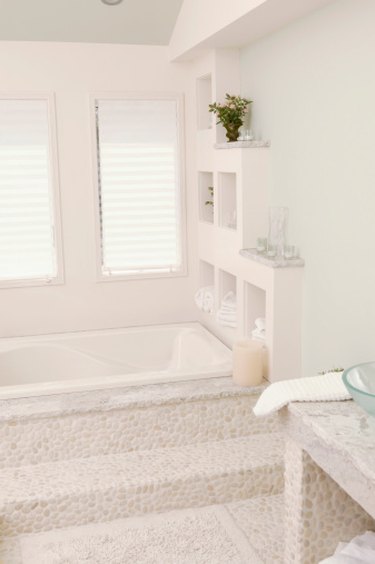Things You'll Need
Tape measure
Reciprocating saw
Floor leveling mortar
Floor leveling foam
Shims
Screws
Screwdriver

A bathtub shouldn't flex, crackle or pop when you fill it with water or step into it. It is helpful to understand what is flexing and why. A full bathtub is heavy, sometimes 500 to 600 lbs. with the addition of a person. If the subfloor underneath the bathtub is inadequate, the wood will flex under its weight. Most people have walked across a floor or deck that flexes because the joists are too far apart and the subfloor is too thin for the load. In addition, fiberglass or acrylic tubs are not as rigid as cast iron tubs. Bottom line: If the underside of a bathtub isn't supported well, the floor and tub material are likely to flex.
Step 1
Put your new bathtub in the the room you'll install it in 24 hours before installation to allow the tub to adjust to the climate at the location. Review the installation instructions and check your stud-and-subfloor layout and condition to make sure they comply with the directions. Your walls should be open to the studs. You should have a substantial subfloor installed that is level and well supported
Video of the Day
Step 2
Cut a hole in the subfloor using a reciprocating saw at the drain location as indicated in the tub manufacturer's instructions.
Step 3
Trial fit the tub in the tub alcove. Set the tub flat on the floor and position a level on top of the tub. The tub should be level in all directions. If the tub is not level, use a floor leveling mortar, a form or material suggested by the tub manufacturer to level the floor under the tub.
Step 4
Position shims between the raw studs and the tub if the alcove is larger than the tub. Screw through the tub flange and the shims into the studs to secure the tub in the alcove. Check the level of the tub as you work to make sure it remains level.
Tip
It is better to overbuild the strength of your floor under bathtubs, showers, and any area that will receive tile. Tile over weak floors will crack along the grout lines or across the tiles as the floor flexes.
Video of the Day